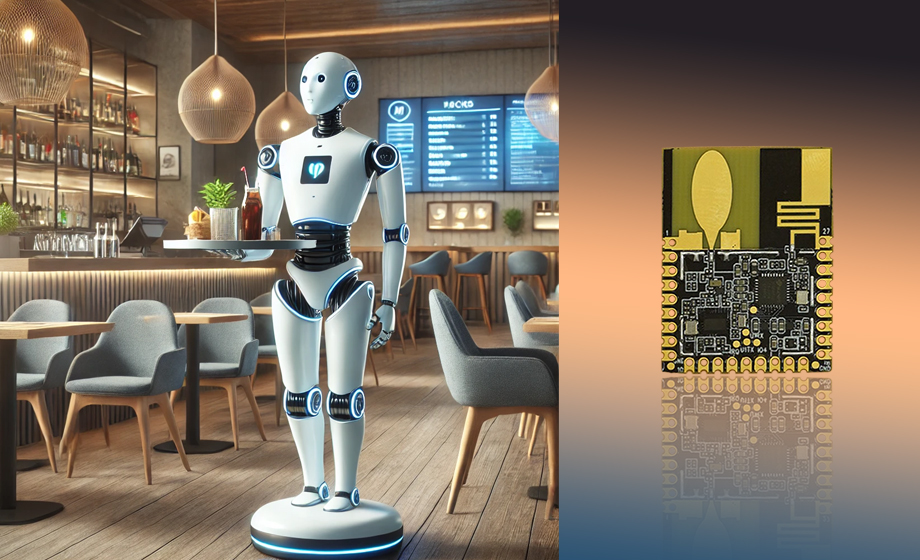With the rapid development of science and technology, indoor navigation technology has become an indispensable part of people's lives. In large shopping malls, museums, airports and other public places, people often get lost because they are not familiar with the environment. Although the traditional GPS technology has achieved great success in the field of outdoor navigation, it is powerless in the indoor environment. At this time, the emergence of ultra-wideband (UWB) radio ranging chip technology has brought innovative changes to the field of indoor navigation.

Overview of ultra-wideband UWB radio ranging chip
Ultra-wideband (UWB) technology is a wireless communication technology with a transmission bandwidth usually above 500MHz. It realizes communication and data transmission by sending and receiving nanosecond pulse signals, and has the characteristics of high precision, high data transmission rate, low power consumption and low interference. The ultra-wideband UWB radio ranging chip is the core component to realize this technology, which has a high-precision time measurement module and signal processing algorithm, which can accurately measure the time difference of signal transmission, so as to calculate the position of the target object.
Second, the application of UWB radio ranging chip in indoor navigation
High precision positioning
The core of indoor navigation is to achieve high-precision positioning. Traditional indoor positioning technologies such as Wi-Fi positioning, Bluetooth positioning, etc., although they can meet the needs to a certain extent, they still need to be improved in terms of accuracy and stability. The ultra-wideband UWB radio ranging chip achieves centimeter-level positioning accuracy by its unique nanosecond pulse signal transmission technology. By arranging multiple base stations or anchor points, combined with the signal arrival time difference (TDOA) or arrival Angle difference (AOA) and other parameters, the system can accurately calculate the location of the target object, providing a solid foundation for indoor navigation.
Rapid deployment and flexibility
The use of the UWB radio ranging chip does not require complex wiring or infrastructure transformation, and only needs to deploy the base station or anchor point in the right location to achieve indoor navigation. This gives UWB technology significant advantages in terms of rapid deployment and flexibility. Whether it is a new building or an existing building, indoor navigation can be easily realized to bring users a convenient experience.
Real-time navigation and path planning
Combined with high-precision positioning technology, the UWB radio ranging chip can also achieve real-time navigation and path planning functions. Users only need to carry a device that supports UWB technology (such as a smartphone, smart watch, etc.) to easily find a destination in an indoor environment. Based on the user's location and destination information, the system can plan the optimal path in real time and display it to the user on the device interface. This can not only improve the user's navigation efficiency, but also reduce the inconvenience and anxiety caused by users getting lost.
Third, the advantages of ultra-wideband UWB radio ranging chip technology
High precision
Ultra-wideband UWB radio ranging chip technology realizes communication and data transmission by sending and receiving nanosecond pulse signals with extremely high time resolution and positioning accuracy. This makes it a significant advantage in the field of indoor navigation, able to provide users with more accurate and reliable positioning services.
High data transfer rate
Ultra-wideband UWB technology is capable of transferring data at very high speeds, which makes it excellent in applications where large amounts of data need to be transferred quickly and efficiently. In the field of indoor navigation, this means that the system can process user requests and instructions more quickly, and improve the real-time and response speed of navigation.
Low power consumption
Ultra-wideband UWB technology operates at very low power, which makes it ideal for use in battery-powered devices. In the field of indoor navigation, this means that users do not need to frequently replace batteries or recharge, and can more easily navigate using UWB enabled devices.
security
Ultra-wideband UWB technology uses a unique and highly secure form of communication, which makes it difficult for unauthorized parties to intercept or access transmitted data. In the field of indoor navigation, this ensures the privacy and security of users and reduces the risk of information leakage.
4. Challenges and prospects of UWB radio ranging chip technology
Although UWB radio ranging chip technology has significant advantages in the field of indoor navigation, it still faces some challenges. For example, how to achieve more stable and reliable location services in complex environments, how to reduce equipment costs to promote the popularization of technology, and so on. In the future, with the continuous development and improvement of technology, it is believed that these problems will be gradually solved. At the same time, with the integration of the Internet of Things, artificial intelligence and other technologies, ultra-wideband UWB radio ranging chip technology will play a more important role in the field of indoor navigation, bringing people a more convenient and intelligent navigation experience.
In summary, UWB radio ranging chip technology has brought innovative changes to the field of indoor navigation. Its characteristics of high precision, high data transmission rate, low power consumption and low interference make it have significant advantages in the field of indoor navigation. In the future, with the continuous development and improvement of technology, it is believed that the technology will be widely used in more fields to bring people a more convenient and intelligent life experience.



